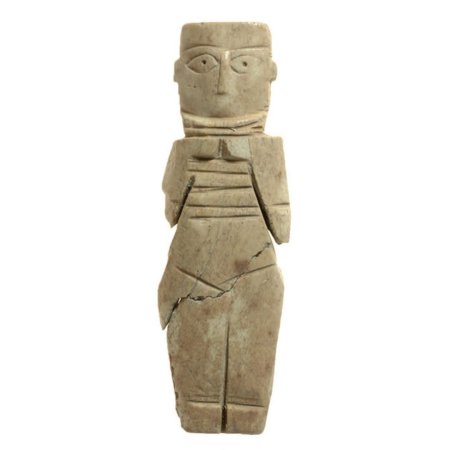Ancient Wooden ‘Coptic Dolls’ May Have Been The Ancestors Of Today’s Barbie Dolls
Conny Waters - AncientPages.com - For as long as anyone can remember, children loved to play with various toys, but kids living a long time ago did not have parents who could walk into a shop and buy something entertaining. Yet, there is archaeological evidence our ancestors did take the time to carve and build things their children could play with. Sometimes, archaeologists uncover ancient artifacts that may have been used for a number of purposes.
Ancient figurines made in the image of humans were often used during ritual ceremonies or as burial gifts, but could some of these human-like figures have been toys, too?
Dolls from excavations in Ramla: (1) Miniature articulated doll; (2) Cloth doll head; (3) Flat articulated doll; (4) Flat articulated schematic doll; (5) Unarticulated schematic doll; (1-5) scale 1:1; (1) Color image courtesy of the Museum of Ramla. © Israel Antiquities Authority
The Term Coptic Dolls
"These bone figurines were first recognized as a homogenous artifact group by Joseph Strzygowski in 1904, although earlier mentions exist. In his volume “Koptische Kunst”, he described 13 “puppen” from the Cairo Museum and was the irst to suggest they were toys rather than cult figurines.
Not all researchers agree. Strzygowski concluded a pre-Islamic origin and dated the dolls between the 4th and 12th centuries. A fragment with a religious Christian Greek inscription, supporting his pre-Islamic origin thesis, was in a group of figurines which he had purchased in Cairo in 1900-1901 for the Kaiser Friederich Museum. Some of these were published later by Sir Leonard
Woolley (1907) and Oskar Wulf (1909).
Although Strzygowski never actually used the term “Coptic dolls,” it was already attached to them by Woolley, and continues to be used even today. This is probably because Strzygowski, and Gayet before him, published them in volumes titled “Coptic Art.” 1
In the Early Islamic period (7th to 11th centuries CE), a unique type of figurine with human-like characteristics, made of bone, began to appear. Ariel Shatil, an Israel Antiquities Authority archaeologist specializing in dolls and figurines, sheds light on these intriguing artifacts.
"Some researchers speculate that these figurines served as toy dolls, while others suggest they might have been fertility figurines. What is particularly fascinating is that no two dolls were identical; each possessed distinct features, even if they shared the same concept. These dolls appeared in the Early Islamic period, over a period of about two or three centuries, after which they mysteriously disappeared from the scene," Shatil explains.
Shatil continues, “Moreover, distinct regional styles emerged. For instance, in the northern part of the country, the figurines had more schematic features, and they were crafted from flat bones such as animal ribs and adorned with dots and circles.
By contrast, in the southern part of the country and in the desert, the figurines were more human-like and realistic. Most of the figurines are depicted naked, without clothes, but there is a group of figurines wearing garments. The exact purpose of the figurines—whether fertility symbols to encourage procreation or simply toys—remains a subject of debate.”
The picture shows a figurine with schematic features, reflecting Egyptian characteristics, dating to the Abbasid period, uncovered in the excavations carried out next to the Western Wall precinct in Jerusalem. Credit: Israel Antiquities Authority
Originally crafted in the region of Iran and Iraq, one wonders how these figurines found their way to this area. Following the Muslim conquest of the country, artisans were brought in to construct and decorate palaces. Alongside the monumental art displayed in these palaces, these same artisans introduced or crafted these figurines, producing them in considerable quantities as they gained popularity within all social classes.
See also: More Archaeology News
“Although predominantly made of bone, there are also ivory figurines, possibly belonging to wealthier families,” Ariel observes. “But, by the end of the eleventh century, these figurines disappeared from the scene, probably due to restrictions imposed in accordance with Islamic law.”
Written by Conny Waters - AncientPages.com Staff Writer
Expand for references- Ariel Shatil - Bone figurines of the early Islamic period: the so called "Coptic dolls" from Palestine and Egypt, Institute of Archaeology, Belgrade
More From Ancient Pages
-
 Nurikabe: Trickster That Manifests Itself As Invisible, Impassable Wall In Japanese Old Beliefs
Featured Stories | Oct 21, 2019
Nurikabe: Trickster That Manifests Itself As Invisible, Impassable Wall In Japanese Old Beliefs
Featured Stories | Oct 21, 2019 -
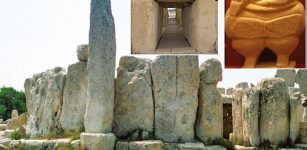 Hagar Qim: “Standing/Worshipping Stones” – Megalithic Complex In Malta Dated To 3600 – 3200 BC
Featured Stories | Feb 19, 2023
Hagar Qim: “Standing/Worshipping Stones” – Megalithic Complex In Malta Dated To 3600 – 3200 BC
Featured Stories | Feb 19, 2023 -
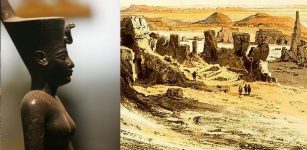 Neith – Fearsome Egyptian Mother Of The Gods – Creator Of Sun God Ra, His Archenemy Serpent God Apophis And The Universe
Egyptian Mythology | Jul 9, 2018
Neith – Fearsome Egyptian Mother Of The Gods – Creator Of Sun God Ra, His Archenemy Serpent God Apophis And The Universe
Egyptian Mythology | Jul 9, 2018 -
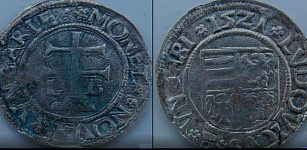 Treasure Coins Dated To 15th And 16th Century Unearthed In Historical Region Of Slovakia
Archaeology | Apr 17, 2019
Treasure Coins Dated To 15th And 16th Century Unearthed In Historical Region Of Slovakia
Archaeology | Apr 17, 2019 -
 Patara’s 2,400-Year-Old Ancient Kitchen And ‘Women’s Room’ Unearthed
Archaeology | Oct 7, 2020
Patara’s 2,400-Year-Old Ancient Kitchen And ‘Women’s Room’ Unearthed
Archaeology | Oct 7, 2020 -
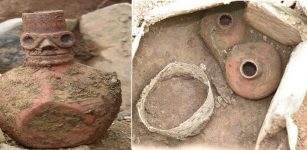 Wari Culture: Ancient Astronomical Observatory Excavated In Cusco, Peru
Archaeology | Dec 20, 2017
Wari Culture: Ancient Astronomical Observatory Excavated In Cusco, Peru
Archaeology | Dec 20, 2017 -
 Secret Behind Ancient Durable Maya Plaster Discovered
Archaeology | Apr 21, 2023
Secret Behind Ancient Durable Maya Plaster Discovered
Archaeology | Apr 21, 2023 -
 Tooth Analysis Reveal Nebraska Resembled A Dry Savanna 18 Million Years Ago
Archaeology | Jun 8, 2022
Tooth Analysis Reveal Nebraska Resembled A Dry Savanna 18 Million Years Ago
Archaeology | Jun 8, 2022 -
 Why Did Modern Humans Replace The Neanderthals? The Key Might Lie In Our Social Structures
Featured Stories | Jun 18, 2024
Why Did Modern Humans Replace The Neanderthals? The Key Might Lie In Our Social Structures
Featured Stories | Jun 18, 2024 -
 Charlemagne – Most Famous Emperor Of Education And Enemy Of Pagan Worshippers – What Did He Really Mean For Europe?
Featured Stories | Mar 22, 2023
Charlemagne – Most Famous Emperor Of Education And Enemy Of Pagan Worshippers – What Did He Really Mean For Europe?
Featured Stories | Mar 22, 2023 -
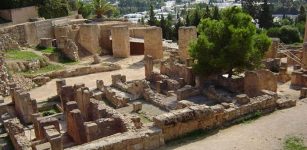 Carthage: Prosperous Phoenician Colony That Became Dominant Power In The Western Mediterranean
Featured Stories | May 21, 2020
Carthage: Prosperous Phoenician Colony That Became Dominant Power In The Western Mediterranean
Featured Stories | May 21, 2020 -
 First Peoples’ Early Migration To Australia – Influenced By Evolving Landscapes
Archaeology | May 6, 2024
First Peoples’ Early Migration To Australia – Influenced By Evolving Landscapes
Archaeology | May 6, 2024 -
 Ouroboros – Cosmic Serpent And The Self-Devourer – Universal, Powerful Symbol Of Great Antiquity
Ancient Symbols | Oct 22, 2017
Ouroboros – Cosmic Serpent And The Self-Devourer – Universal, Powerful Symbol Of Great Antiquity
Ancient Symbols | Oct 22, 2017 -
 Historian Discovers Artifacts And Skeletons Of An Ancient Unknown Race In The North American Desert
Ancient Mysteries | May 6, 2024
Historian Discovers Artifacts And Skeletons Of An Ancient Unknown Race In The North American Desert
Ancient Mysteries | May 6, 2024 -
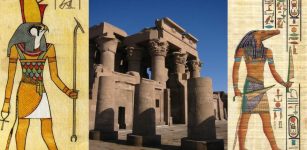 Unusual Double Temple Of Kom Ombo Dedicated To Crocodile God Sobek And Falcon-Headed God Horus
Featured Stories | Mar 14, 2016
Unusual Double Temple Of Kom Ombo Dedicated To Crocodile God Sobek And Falcon-Headed God Horus
Featured Stories | Mar 14, 2016 -
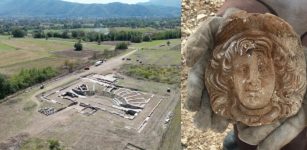 Roman ‘Backwater’ Challenges Major Assumptions About The Ancient Empire’s Decline
Archaeology | Dec 12, 2023
Roman ‘Backwater’ Challenges Major Assumptions About The Ancient Empire’s Decline
Archaeology | Dec 12, 2023 -
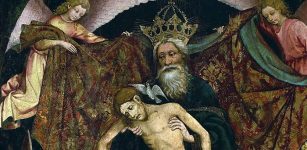 Looted ‘Pietas Domini’ Gothic Altar Dated To 1435 AD Returns From Germany To Poland
Archaeology | Mar 22, 2020
Looted ‘Pietas Domini’ Gothic Altar Dated To 1435 AD Returns From Germany To Poland
Archaeology | Mar 22, 2020 -
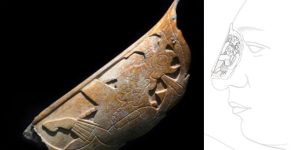 Ancient Maya Nose Ornament Made Of Human Bone Discovered In Palenque
Archaeology | Sep 24, 2023
Ancient Maya Nose Ornament Made Of Human Bone Discovered In Palenque
Archaeology | Sep 24, 2023 -
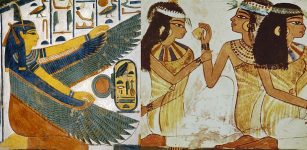 Ancient Egyptian Women Had Equal Rights As Men – Egyptian Cosmology And Goddess Maat Reveal Why
Ancient History Facts | Dec 18, 2017
Ancient Egyptian Women Had Equal Rights As Men – Egyptian Cosmology And Goddess Maat Reveal Why
Ancient History Facts | Dec 18, 2017 -
 How Did A Major Cooling Event 8,200 Years Ago Affect Hunter-Gatherers?
Archaeology | Jan 28, 2022
How Did A Major Cooling Event 8,200 Years Ago Affect Hunter-Gatherers?
Archaeology | Jan 28, 2022


